Many fall nectar plants benefit bees and other insects. One of the best is goldenrod.
One thing that everyone “knows” is that goldenrods cause allergies — just like some centuries ago people “knew” that the sun revolved around the earth and they “knew” the earth was flat. But none of these beliefs are true! (See the Resources at the bottom for more about the allergy myth.)
Unfortunately for goldenrods, they often grow in the company of ragweed, which does indeed cause allergies and sneezing.
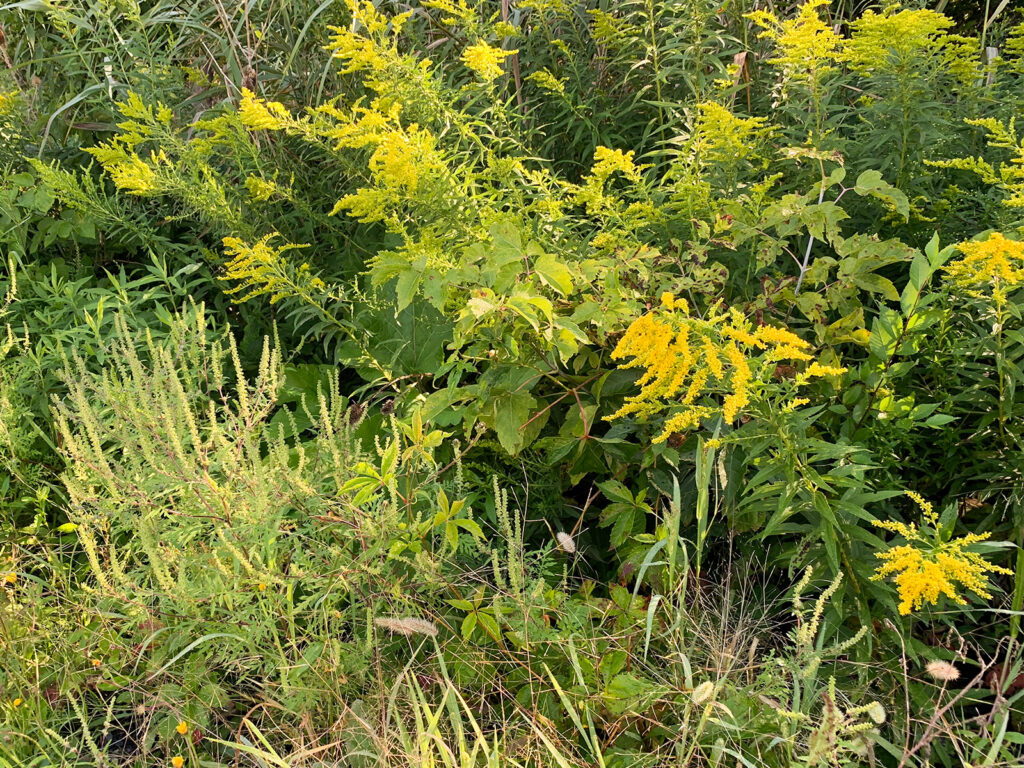
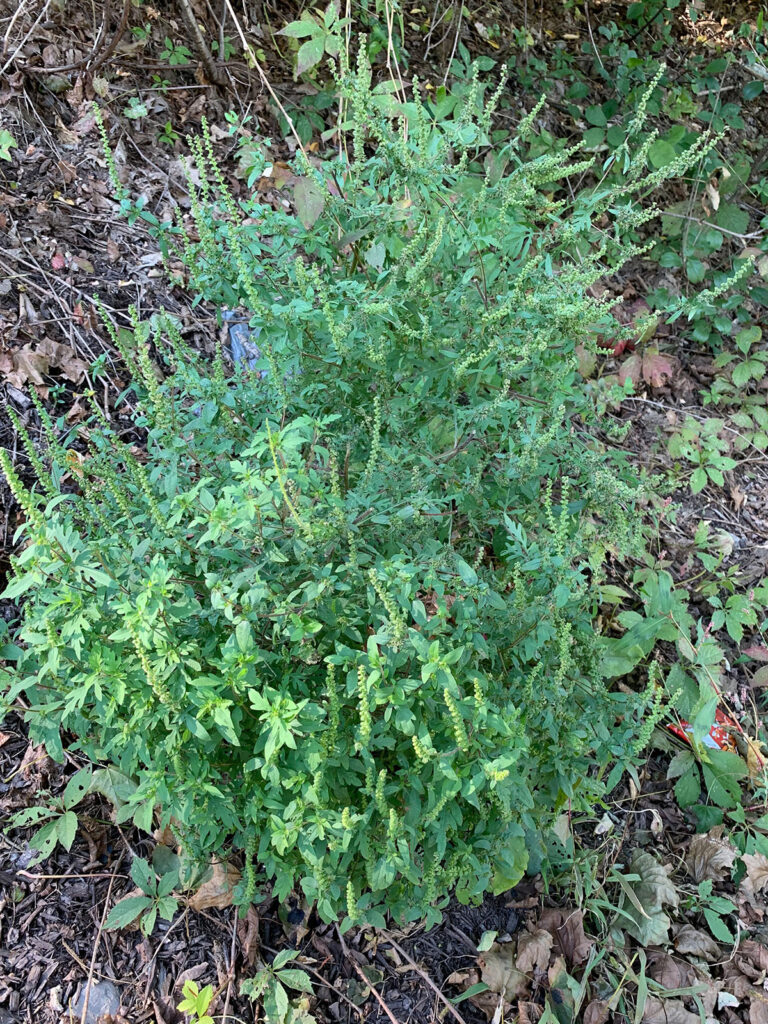
The photo above shows a field we walk past on our way to the library. If you start sneezing, what do you see? Probably the bright yellow goldenrod. But if you look closely, there’s a less-noticeable patch of ragweed in front of it.
And some people even identify goldenrod as ragweed when they see it!
Goldenrod is NOT ragweed, and ragweed is NOT goldenrod! Ragweed is a different plant altogether.
Wind- vs. insect-pollination
THIS IS THE IMPORTANT POINT:
Plants that are INSECT-pollinated, such as goldenrod, have heavy, sticky pollen and less of it. They don’t need a lot since they spend their energy creating flowers to attract insect pollinators that do the pollination work.
Plants that are WIND-pollinated, such as ragweed, don’t make showy flowers. They rely on the wind to achieve pollination, so they need LOTS of lightweight pollen to blow everywhere to ensure at least some reaches its target. In other words, lots of lightweight pollen floating around — pollen that will likely reach your nose on its journey.
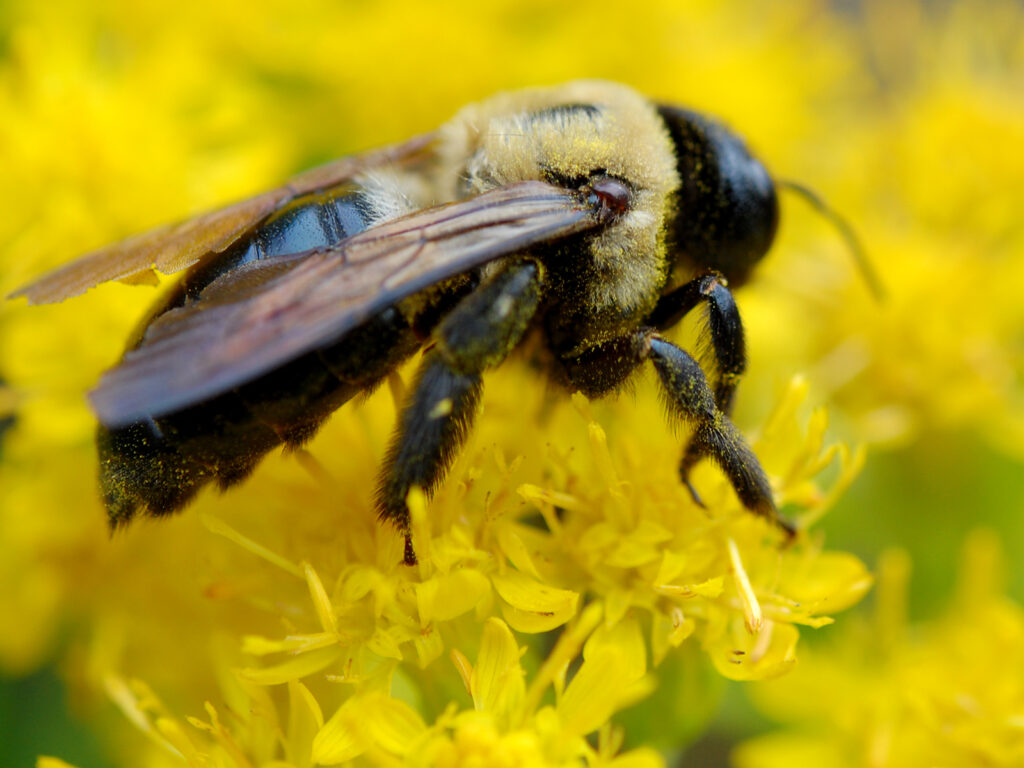
Goldenrods (and other flowery plants) are insect-pollinated. Ragweed (and other non-flowery plants) are wind-pollinated.
And unfortunately research is showing that increased concentrations of CO2 and higher temperatures intensifies its allergenic effects.
Hmmm … increased temperatures and increased CO2 … what does this bring to mind?
Goldenrods in the garden
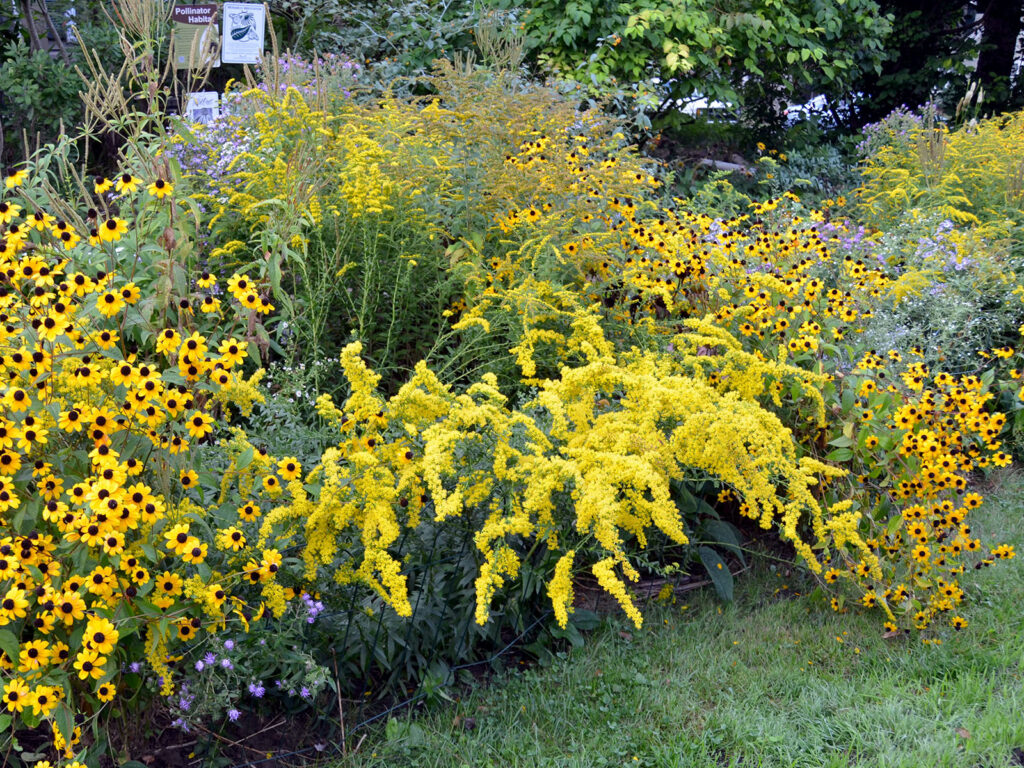
People don’t often plant goldenrods in their flower gardens, and they may even eradicate any goldenrods they find. This is doubly unfortunate.
First, this is unfortunate for pollinators and butterflies. Goldenrods are a nectar-rich fall flower that provide pollinators and butterflies the energy they need to make it through the winter (or at least produce healthy queens) or, in the case of monarchs, pack on those fat reserves to make the journey to Mexico and survive until spring.
Second, this is unfortunate for gardeners since they’re missing out on a beautiful group of easy-care plants.
LOTS of different native goldenrods
Note: There’s more info on goldenrods on our Wildflowers page.
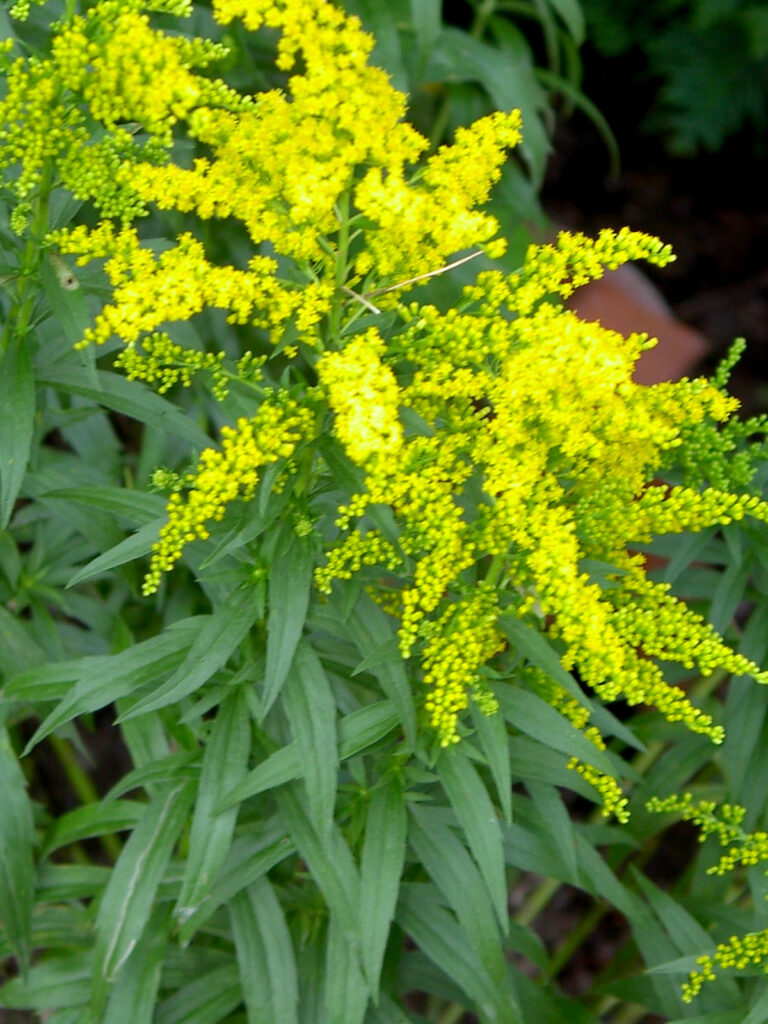
Canada goldenrod (Solidago canadensis) is what you often see in fields in the fall. These huge fields, often combined with native asters, are crucial for monarchs on their journey south. In a home garden, though, you can grow a larger variety of goldenrods.
Fortunately, there are many other kinds of goldenrods. Some may indeed spread either by rhizomes or by seed, so I often edit out the extras.
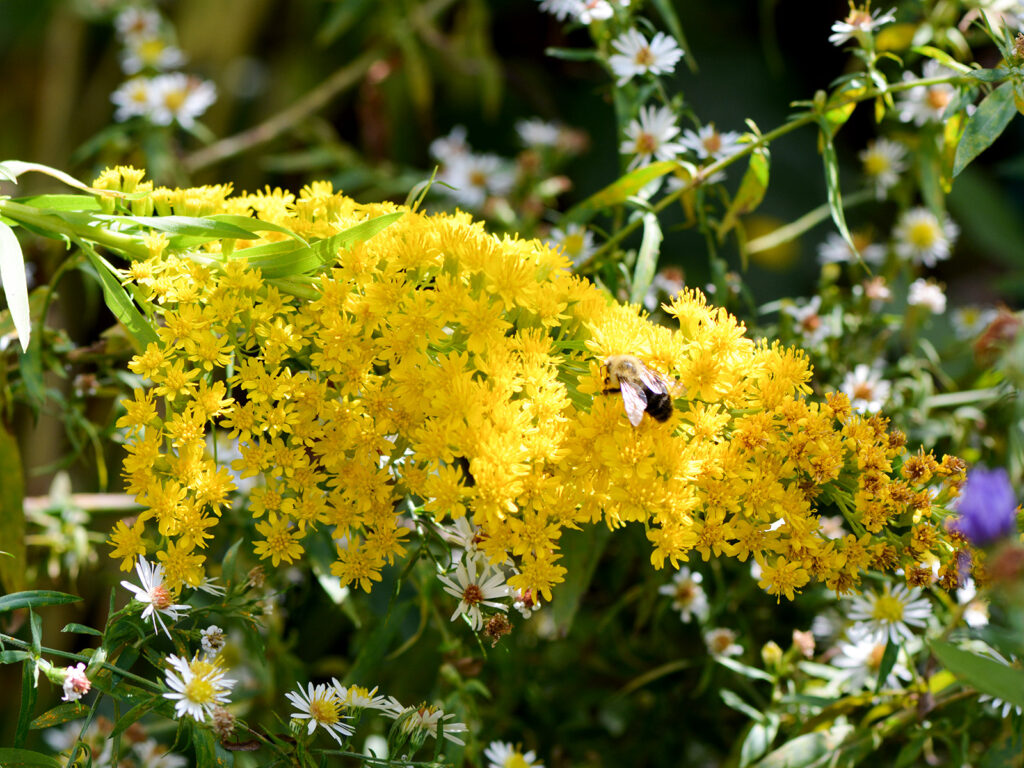
Primarily found along seashores, seaside goldenrod (Solidago sempervirens) is especially appropriate in Syracuse, nicknamed “Salt City” for its historical salt mines. I’ve read that it is also being increasingly found inland because of … you guessed it: road salt!
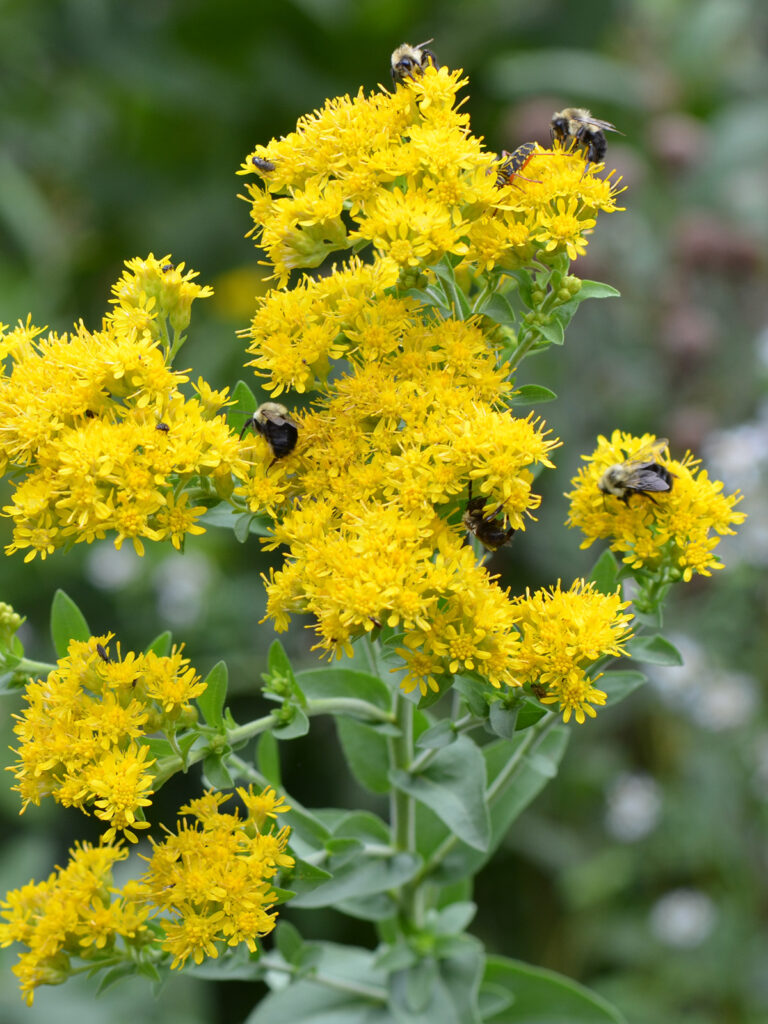
I like all of the goldenrods, but stiff goldenrod (Solidago rigida) is one of my favorites. It not only has beautiful flat-topped flowers in the fall, but its foliage is beautiful all season long. It does get quite tall, so I cut some of the plants back in June.
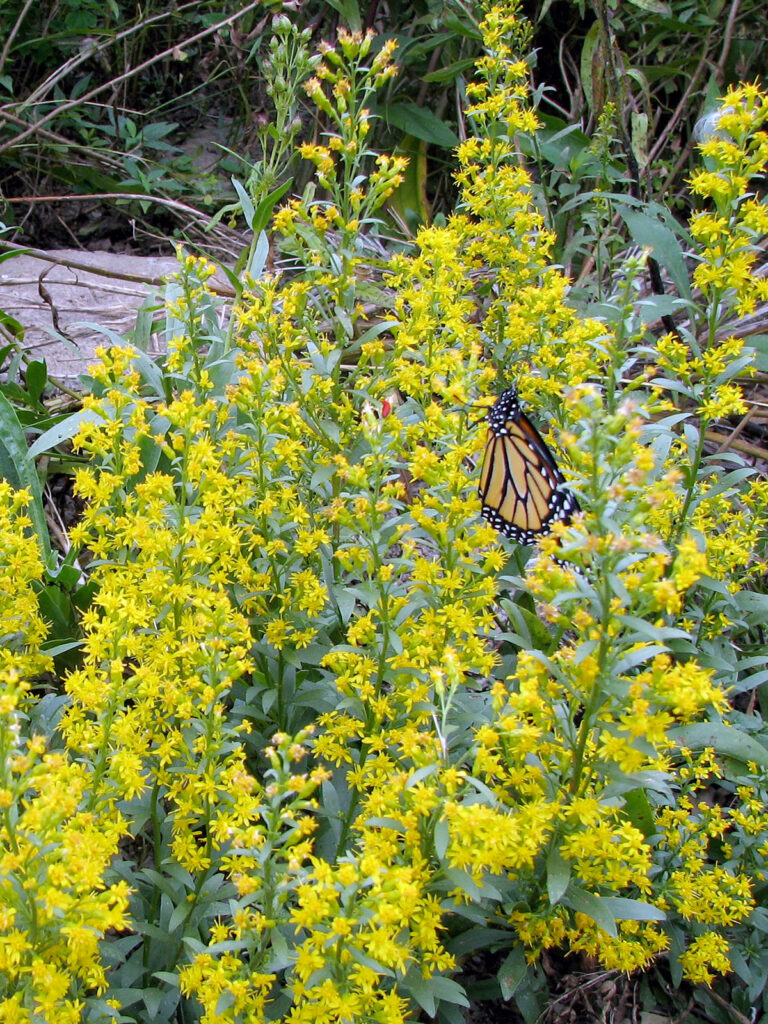
Showy goldenrod (Solidago speciosa) is a particularly nice goldenrod. It’s not short, but it’s somewhat shorter than some other kinds of goldenrod.
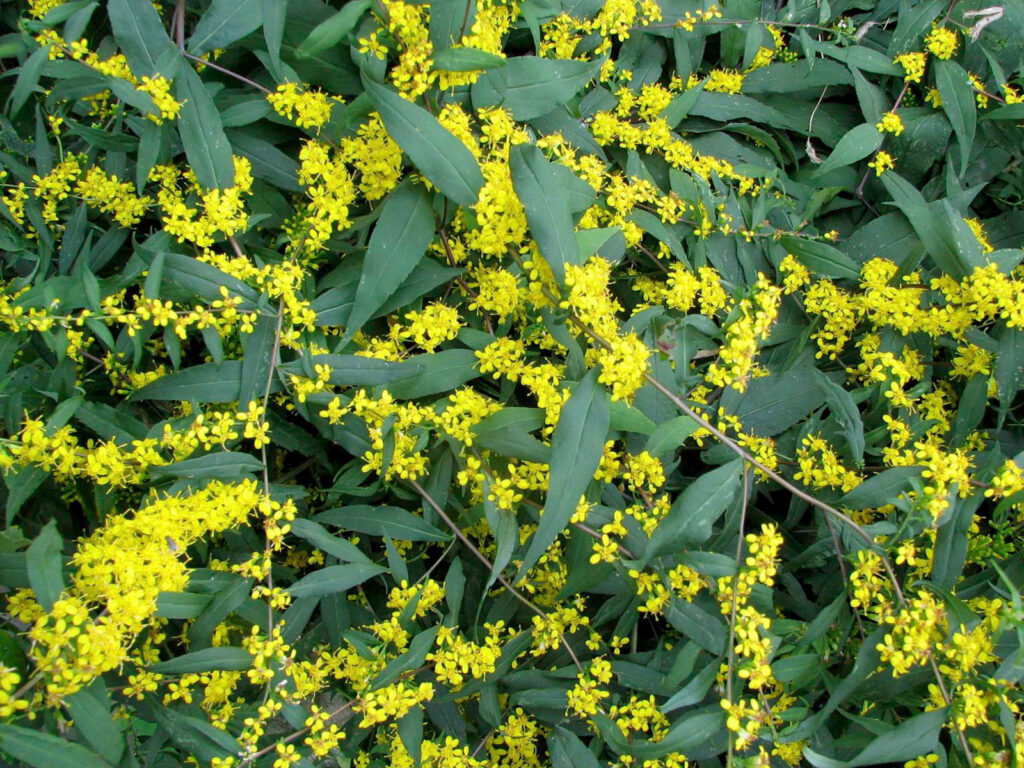
Blue-stemmed or wreath goldenrod (Solidago caesia) is a handy plant to have to brighten up a shady area. Unlike most goldenrods, blue-stemmed goldenrod isn’t very tall, spreading out horizontally instead.
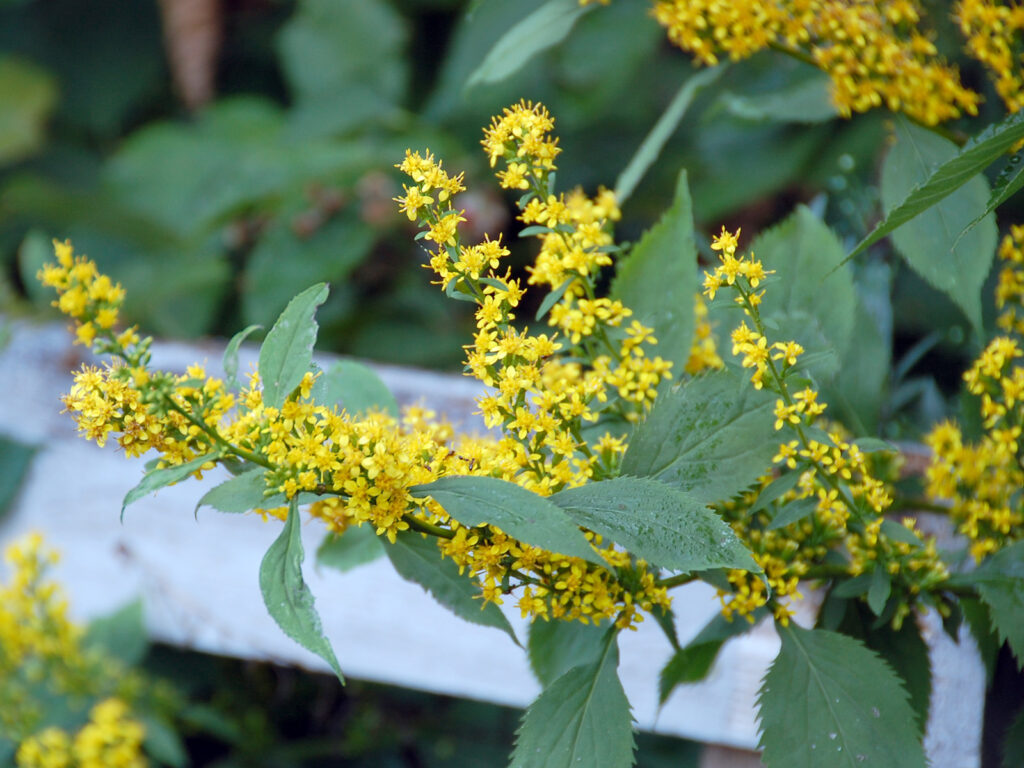
Zigzag goldenrod (Solidago flexicaulis) has a zigzaggy stem and beautiful flowers.

It also has beautiful foliage. Another one that’s suitable for woodlands — if you want something that will spread.
However, it’s easy to pull out the extras.
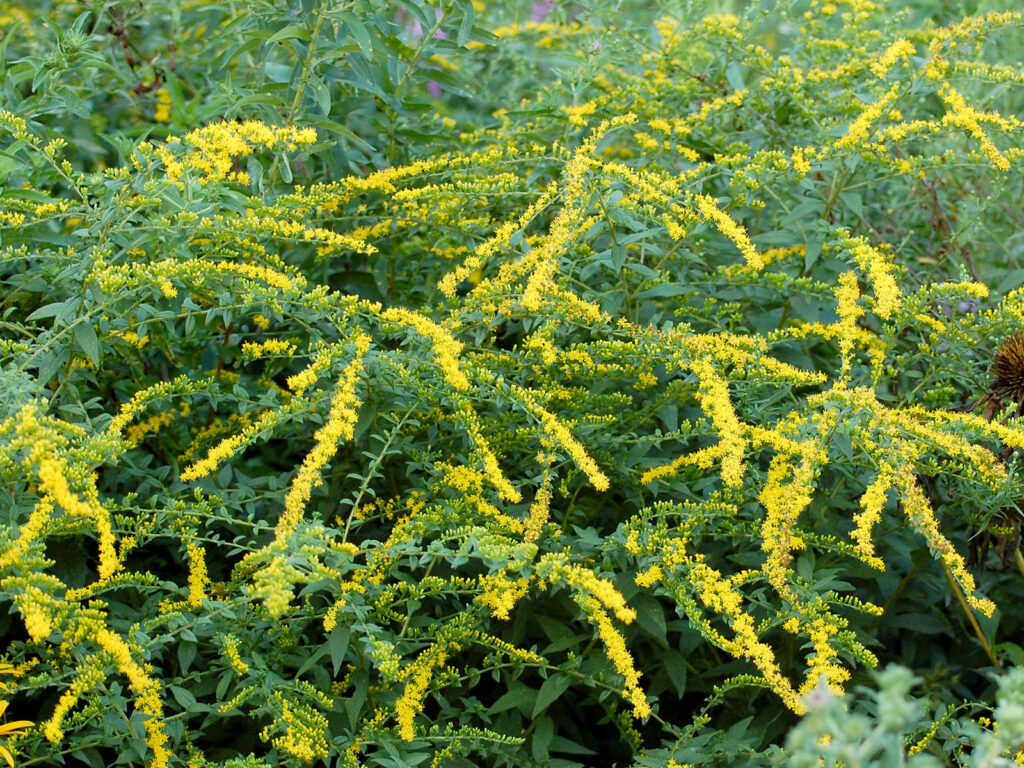
Rough-stemmed goldenrod (Solidago rugosa) is probably available most often as the cultivar ‘Fireworks.’ I have both the plain species and Fireworks. Fireworks is perhaps a tad more refined looking, but there’s not that much difference. The cultivar’s popularity is probably due more to marketing and the fact that growers can charge more for a cultivar — and the fact that it’s harder to find just plain S. rugosa since nurseries would prefer to offer the more profitable cultivar.
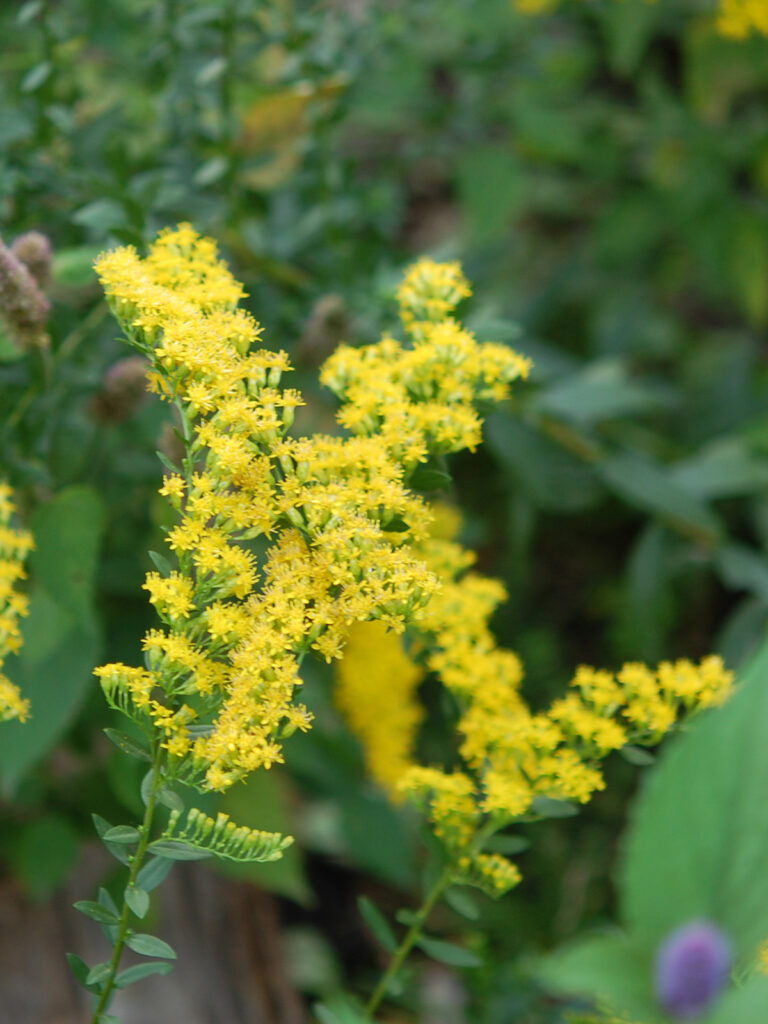
This is the endangered species Short’s goldenrod (Solidago shortii ‘Solar Cascade’).
Of course, this is a purchased cultivar, not a plant taken from the wild.
Resources
- Hilton Pond:
- Ode to Goldenrod – Beautiful closeups of the many bees and other insects that use goldenrod
- Pollinator Pathways:
- Tufts Pollinator Initiative:
- Goldenrods deserve a place in your garden – EXCELLENT list of goldenrod species with their characteristics and requirements
The allergy myth
I’m including a sampling of the large number of articles that all conclude the same thing: Goldenrods are NOT the cause of allergies. Some people may have contact dermatitis if they handle them a lot (such as florists), but this is not the hay fever people worry about.
- National Wildlife Federation:
- Audubon:
- Louisiana State Univ.:
- Univ. of Florida:
- Horticulture:
- The Prairie Ecologist:
Videos
Part 2 of a three-part series on Native Landscaping discusses pollen: Science
Reflections
Some are reluctant to plant goldenrods, believing these plants cause allergy problems. The real culprits are other, often less conspicuous plants that occur with the goldenrods, especially ragweed (Ambrosia) species. While many have tried to repair goldenrod’s reputation for decades, too many people still have not heard this message.
~ Don Leopold, Native Plants of the Northeast, p. 129
Convincing gardeners to grow goldenrods is a bit like trying to sell Toyotas in Detroit, but I will continue anyway. They are certainly ubiquitous in the fall landscape and are still wrongly accused of causing hay fever. Therefore, it bears repeating that goldenrods, like aster, Joe-Pye, ironweeds, and all the Composites, are insect-pollinated, so their pollen is heavy and sticky in order to facilitate transfer by our six-legged friends. It is the wind-pollinated plants like the grasses, ragweed, and many trees … that produce the great quantities of light, airborne pollen that get into our noses and throats and cause the immune reaction known as hay fever.
~ William Cullina, Wildflowers, p. 197 (published by The New England Wildflower Society, now known as the Native Plant Trust)
The same two species [goldenrod and milkweed] grow on my place. They grow here because I planted them. But I’m free to stand by while they die of neglect or even to kill them outright if I want. Because they’re mine: I own the land. How strange a notion! The perception of ownership isn’t shared by any of the creatures who live on the land, or from it, or cross over it. I own the plants, but not the relationships by which their roots are nourished, or their flowers pollinated, or their seeds dispersed. I own the dirt, but not the living systems that maintain it. Yet ownership gives me license to harm all these things that don’t belong to me. This thought was strange enough in intimate surroundings, touching the goldenrod’s velvet leaves, stroking the milkweed’s silk. It became more uncanny still as I watched the whole width of the continent, coast to coast, all owned, every acre of it, slide slowly beneath the belly of the airplane bound for California. Conservation departments, nature preserves, the very law of the land, can’t protect your lot or mine. It’s up to us to do it of our own free will because we understand that the land is not our own but only in our keeping.
~ Sara Stein, Planting Noah’s Garden pp. 16-17
